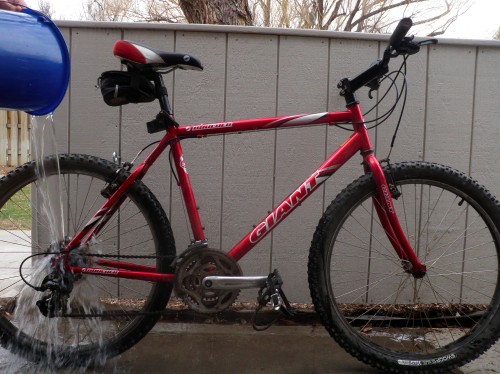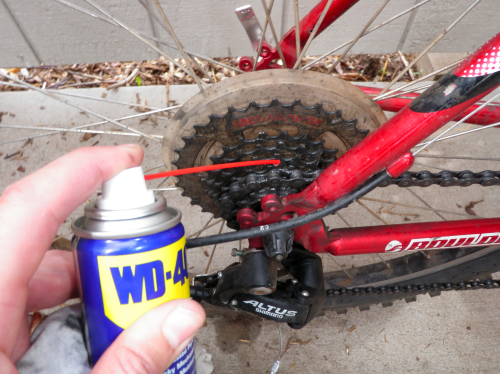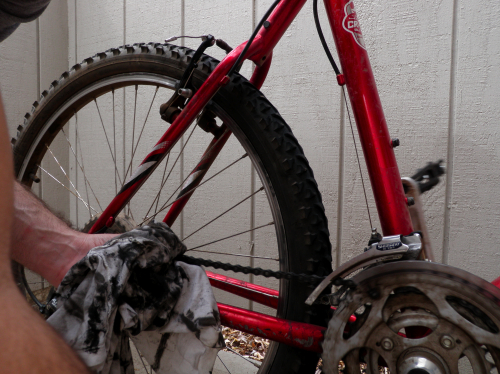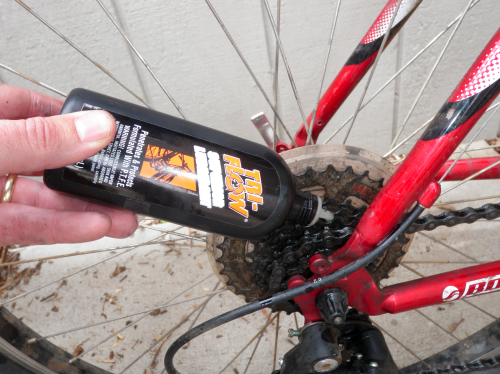
Bicycle Cleaning and Preparation
Bicycle Cleaning - It is important to clean your bike after mountain biking on a muddy or dusty trail so that dirt and grime do not get embedded into your bicycle's components. Performing three easy, post-ride maintenance steps can make getting back on the trail an impulse decision. The following are three post-ride maintenance steps that can keep your bike looking good and running smoothly.
1a) Bike washing - Use a hose or bucket of water to gently rinse off dirt, mud, and grime. Specifically, do not rinse with high pressure water because you do not want water or dirt to be forced into your bike's components (e.g., bearings, chain). Allow your bike to dry in a warm, arid area.
1b) Wipe it down with a dry rag - A second school of thought is to never expose your bike to any more water than is necessary. Crossing streams while on the trail is fine because it is a part of your ride. However, getting your bike wet for cleaning purposes can be more harmful than helpful because dirt on top of components is not as bad as water in them. Thus, if possible, simply wipe your bike down with a dry cloth.

2a) Chain cleaning (annually) - After letting your bike dry, clean your chain and rear derailleur with WD-40, a degreasing solvent, or Grease Monkey Wipes. Spray WD-40 or use a rag soaked with degreasing solvent to clean your chain of dust and debris. Use one hand to spin the chain with a foot pedal and the other hand to apply degreaser. If you use WD-40, allow it to soak into your components for several minutes before cleaning your chain with a rag. Be careful when using degreasers that contain hazardous chemicals by following directions on the label. Some brands, like Grease Monkey Wipes, offer a “bio” or “green” degreaser that contains less potent chemicals. Bicycle specific degreasers are preferred but WD-40 can be used if it is more convenient.

2b) Chain cleaning (regularly)- First, I was taught to clean my chain vigorously as is described in 2a), but it is better to reserve that practice for an annual cleaning. I have since been taught that it is better to wipe dirt off your chain and lubricate it as is described in step 3). Notably, it is bad to clean your chain with a degreaser because it removes all of the grease, which your chain needs to function properly. Thus, if you degrease your chain then be sure to lubricate it, but otherwise simply lubricate it and leave the grease.

3) Chain lubrication - Apply a biodegradable bicycle lubricant like Yelo Velo to your chain because it reduces friction and, thus, keeps it rotating smoothly. Be sure to remove excess lubricant with a rag after letting it soak in for several minutes.

Bicycling preparation - If you have completed the three post-ride maintenance steps then there are only two pre-ride maintenance checks to perform: tire pressure and brakes.
1) Tire pressure - Inflate tires to the pressure recommended on the side of them. For tube tires, a pressure between 35 and 45 psi can work well. For tubeless, a pressure of 30 psi and even lower can work well. Higher pressures reduce the chance of a pinch-flat and lower pressures increase traction by allowing the tire to conform to the trail. Therefore, inflate to a higher pressure for cycling on smooth trails and inflate to a lower pressure for mountain biking on rocky, dusty, or sandy trails.
2) Brake check - It is wise to give your brakes a quick test before heading out on the trail. Ideally, your brakes do not squeak, are separating from your bicycle tire rims on release, and are providing an effective amount of stopping power that is balanced between the front and rear. Check out our brake adjustments for a more detailed explanation.
